
After five years since it was first announced, Biomutant has finally come out. During the time of development, the boys at Experiment 101 toiled away at taking the DNA of many fan-favorite titles of the past generation to create their own chimera of a game.
While a developer cherry-picking their favorite game ideas and merging them all into one elephantine package is nothing new; it often times fails to deliver. Most open-world games produced by Ubisoft tend to fall into this trap, being stuffed with extraneous features that the overall experience begins to lose meaning and focus.
Biomutant could have easily succumbed to feature creep during its long development cycle. While it is an enormous game that is close to being hopelessly bloated with content; Experiment 101’s scientists managed to stitch together a monstrous, Frankensteinian abomination that is impressively gripping despite some rough edges.
This is a review coupled with a supplemental video review. You can watch the video review or read the full review of the game below.
Biomutant
Developer: Experiment 101
Publisher: THQ Nordic
Platforms: Windows PC, PlayStation 4, Xbox One (reviewed)
Release Date: May 25, 2021
Players: 1
Price: $59.99 USD
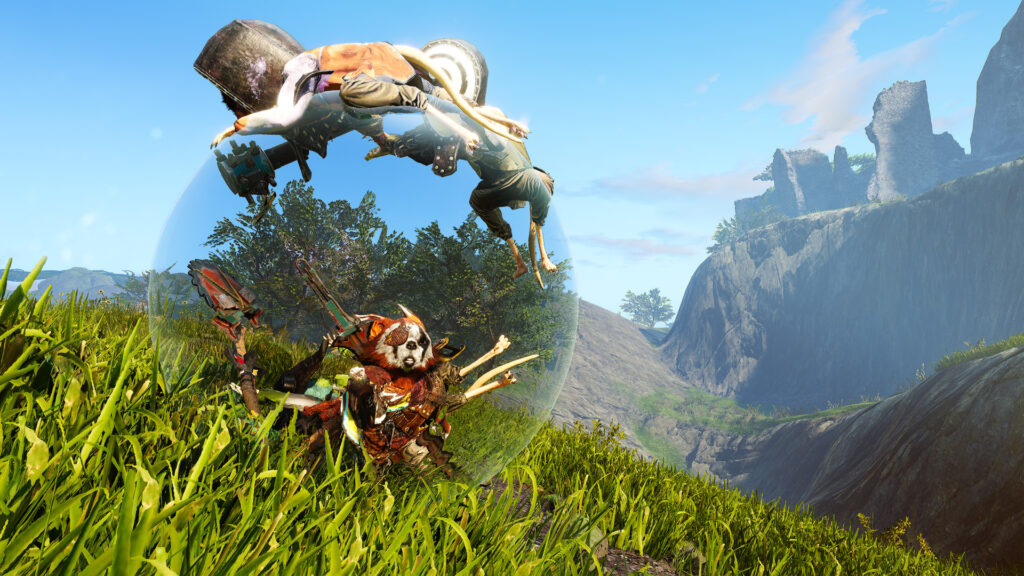
Biomutant feels like the kind of game that might have appeared during the 2000s; when game developers were more free to be creative and come up with unusual concepts that spark the imagination. Before there was intensive micromanaging, mandated online features, or extensive focus-group testing; developers were more free to come up with some wild ideas.
A kung-fu legend inspired epic that melds together elements of Oddworld, Mad Max, and a nature documentary; is the kind of insane creativity that has been absent in modern gaming for the better part of a decade. Biomutant is such a bizarre mixture of influences, that it comes out on the other end as something wholly original.
Like a good epic adventure; the story begins as a classic “hero’s journey,” but told out of sequence with playable flashbacks as the early parts of the game unfold. This keeps the pacing moving along, and does not interrupt the exploration too frequently. The player is always given a choice when to continue, or to decide where the story may go with a black-or-white morality system.

Biomutant is thankfully not too preachy with its morality. The hero’s story begins as a quest for the revenge of the deaths of the parents; and early on it is made very clear that it is on the player to choose forgiveness, or to deliver righteous justice on the hulking wolf-man that murdered them.
Major world-changing choices are spread throughout the very large and dense setting. Players will have to choose allegiances, decide who lives and who dies, and ultimately decide the fate of the environment itself. Maintain the status-quo, or destroy to rebuild? Biomutant allows so much room for personal expression that it can be overwhelming at times, and it is best to commit and go all in, head first.
Character creation is very flexible. At the start, creating the main character is more or less choosing starting stats or specialization. Leveling up allows players to boost one stat by ten, and through this anyone can become anything; which makes it easy to become a burly psychic over time.
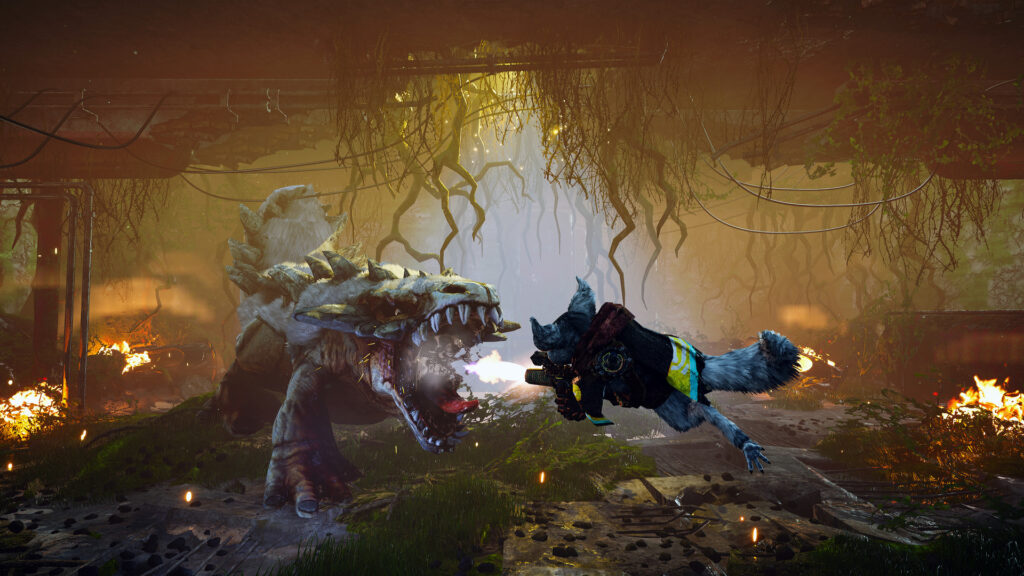
One stat that will stand out from the others is movement speed. The protagonist in Biomutant can be customized to move as fast as a squirrel on a nicotine binge. This is something that most sandbox games should use; it can become very boring to retread over some of the same areas while scavenging for components to make a better machine gun.
Being able to blaze through previously explored zones like Sonic the Hedgehog is more satisfying than having to sit through a load screen for fast traveling. No matter how fast the hero becomes, fast travel will always become necessary eventually due to the scope of the world built for Biomutant.
While 64 square kilometers is a beefy and sizable piece of landmass to play in; there are also subterranean caves and ruins to discover. Some towns have a fair bit of verticality to their layout, and some areas that are uninhabitable by normal means of exploration.
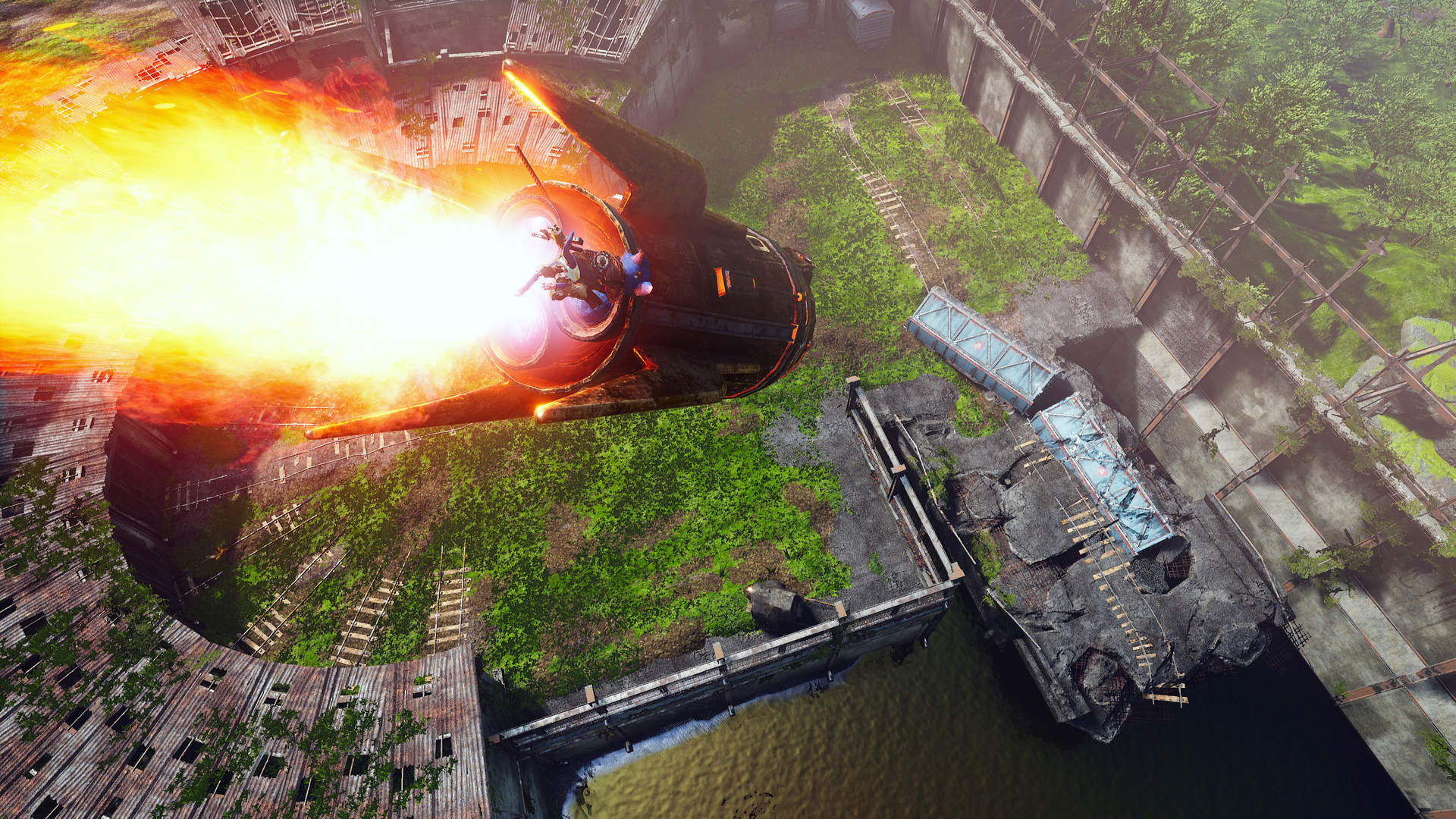
All the logical settings one could expect in a big RPG world makes it in, and some new ideas make the cut too. A tremendous landfill of garbage makes up one region that requires a large mech suit to explore. Remnants of humanity’s reign pepper the world; like the tremendous pipelines that are like veins of the land that serve as landmarks.
Dilapidated superhighways and derelict human cities give the world scale for the weird, mutant critters to build their society upon. The denizens themselves are an odd mix of animal hybrids, where it is not clear what they are. The can be best described as a Jim Henson-esque creation, with a bit of Brian Froud, Mad Max, and Ratchet and Clank.
Mechanical designs are very industrial, but have gone the way of being worn out from the ravages of time. Inspecting the innumerous objects and assets found in the world tells a story, and lore enthusiasts will undoubtedly have a lot to chew on when exploring Biomutant.
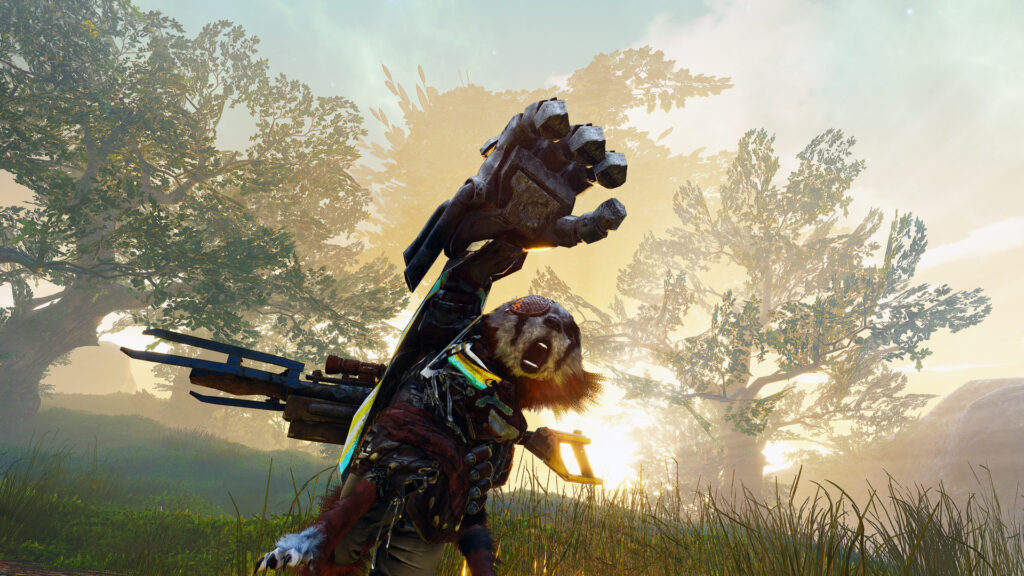
Biomutant began development a long time ago, and it does show signs of it. Much of the textures have that rough and muddy Unreal Engine look to it. Some effects are also unconvincing; like some puddles of water in a muddy area end up resembling puddles of mercury instead. Foliage, while dense, has a noticeably limited draw distance, even on Xbox Series S.
Fur is by far one of the most important effects in Biomutant. Most of the creatures in the game are furry, and most of the time the effect is convincing; but it is apparent that the developers took an economical route to make it possible. The fur is achieved with a layering technique instead of using a shader which might have been too taxing.
Thankfully, the art direction is strong enough to give the impression of the designer’s intent. All critters and characters have a realness to them, thanks to the filthy and dirty aesthetic. Everyone looking like they’ve been sleeping in the woods for a week adds a lot of authenticity to the world; makes it feel real.
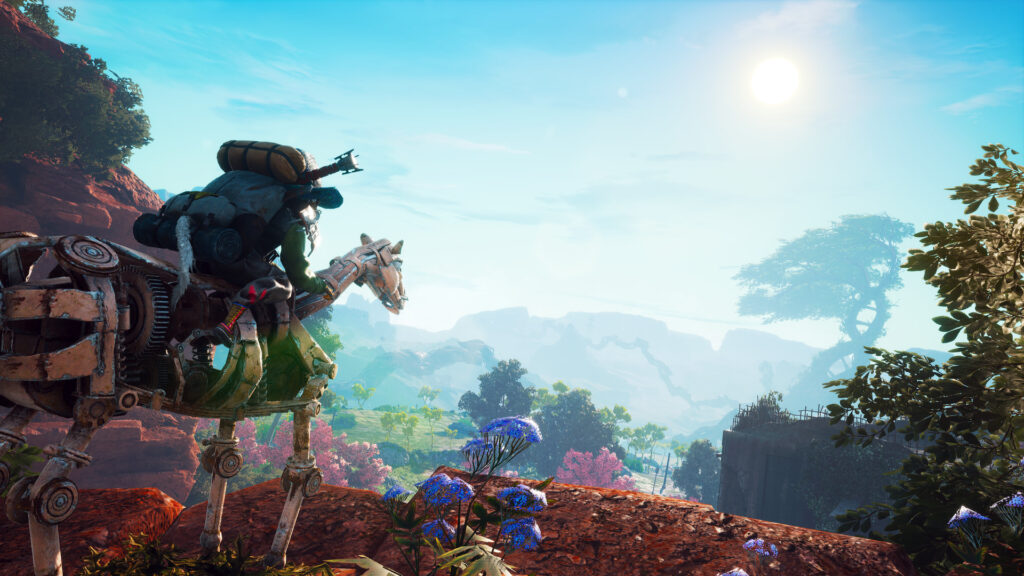
The art direction is overall a knock-out, but there are some questionable choices. Biomutant makes extensive use of Unreal Engine 4, and the developers went over board with its photographic effects; specifically the depth of field. Dialogue scenes make the background ridiculously out of focus, that it makes it simulate the sensation of being near-sighted.
The aggressive use of the depth of field suggests an amateur was in charge of this aspect of the game, or it may have been a mistake. Other choices that might confuse players is how all the story is expressed by a Stephen Fry-esque narrator who sounds like he is reading a script for the most hardcore episode of Pocoyo.
All characters speak in a made-up gibberish, and the narrator functions like something one might hear on a nature documentary. He explains what characters are saying, and suggests how they are feeling. It is a very unusual approach for telling a story, but after a while it grows on you. He becomes a character all his own, and players are left with trusting what this guy has to say.
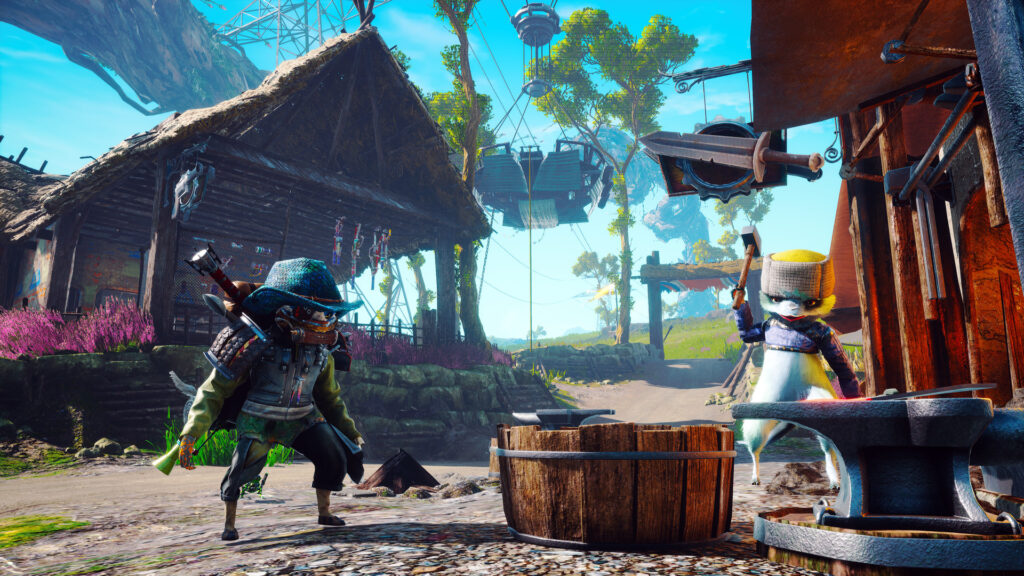
Combat in Biomutant is a lot to take in. There is so many options and flexibility when fighting and what kind of build to go for. Shooting comes in many varieties; such as sniping, dual-wielding, machine guns, and explosives. On top of just weapon choices, shooting also comes with its own unique abilities too.
Each weapon class comes with its own list of abilities to learn, so no matter what there is something to work towards. This system applies to all weapon classes; be it large hammers, swords, or even staves.
There is so much to work with, and Biomutant gradually introduces these tools of war that it becomes best to save upgrade points until you feel comfortable with a specific weapon. Everything handles differently, and there are many moves to learn.
No wonder why Biomutant took five years to make; the range of combat is flexible, and very thoughtfully executed for a huge breadth of options. “Magic” is also a viable option, where taking the spiritual path leads to being able to fire huge streams of thunder from your paws like Emperor Palpatine frying Luke Sywalker. It is another path that is also dense with tons of moves to learn.
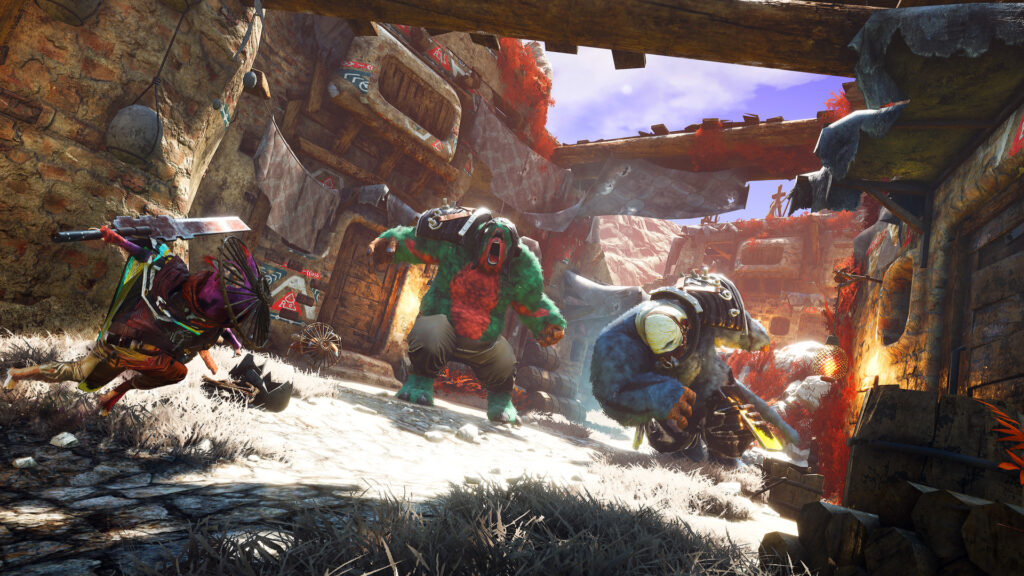
The other side of character building is the mutations. This is a very big part of Biomutant, and closely ties to the game’s theme of change. Collecting the radioactive currency allows the hero to gain very weird abilities that change the way the game is played in and out of combat.
Some are minor; like being able to spawn a bouncy mushroom at will to gain more air, or encasing oneself in a bubble which can roll around like Samus in a comical morph-ball. At times, you really do feel like a freak of nature with all the self-imposed experimentation.
As the game unfolds, the genetic structure of the heroes becomes utterly unrecognizable; and you wonder if you are yourself anymore. This can be reflected in the state of the world, depending on what fate you choose for the world tree.
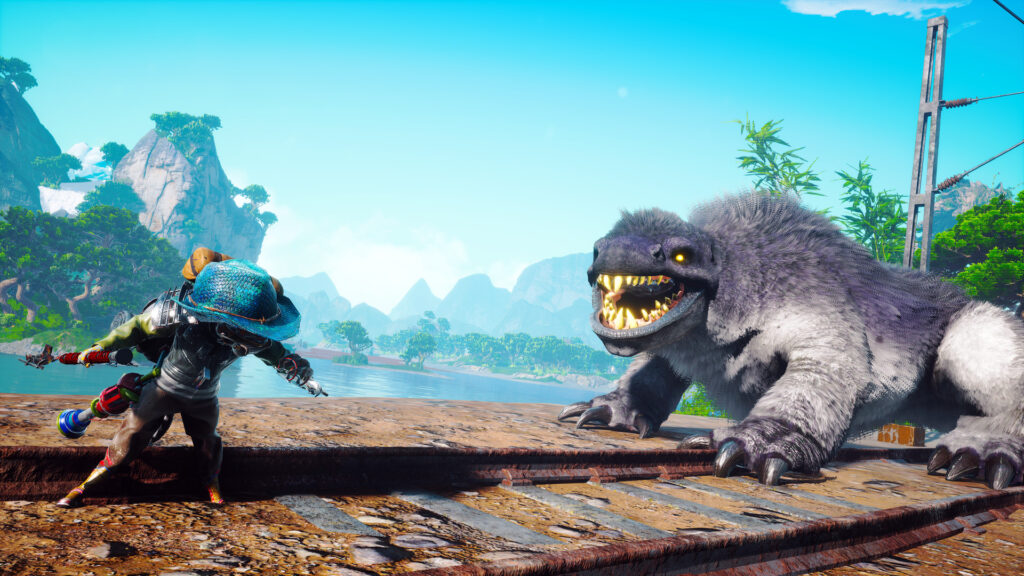
Biomutant doesn’t exactly pose the existential questions on the surface. This is a kung-fu legend at heart, and the script is more packed with philosophical musings that sometimes come off as profound or relatable. Experiment 101 truly cared about the game they were making, and they did their homework.
Like any martial arts legend, Biomutant has a lot of fighting. Admittedly, the combat is just serviceable, and would be much better and satisfying if the enemies had better audible cues for their oncoming attacks. It is much easier to react to something we hear than a visual, and unfortunately the combat feels messy due to the lack of care put into the sound of battle.
The combat mechanics are very 2010s; this is the Arkham beat-em-up system but sloppier. It’s more difficult to tell what you are doing sometimes due to the squat anatomy of the player-character, and this also applies for similar-sized threats. Attacks don’t feel like they are connecting, and often they don’t due to some visual bugs.

Despite completely whiffing attacks or poorly aimed shots, Biomutant is very generous with its soft auto-locking. Most of the time, hits are guaranteed despite how it looks. The only real concern in battle is evading and timing the block or parry, which is much tighter than throwing blows against a gigantic Muppet.
Due to the lack of attention given to the audio for the enemy’s telegraphed attacks, parrying is much harder than it should be. Going by the little symbol that appears above an opponent’s head is a designer’s crutch. If Biomutant had exceptional sound design, and thoughtfully applied audible cues, then these incongruent visual cues would be unnecessary, and the fighting would be more satisfying.
The audio overall is very restrained and subdued. Most of the experience is set to the ambiance of nature. It is atmospheric for sure, and the few pieces of music that are in the game have a strong Wuxia flavor to them; lots of percussive drums and two-stringed Chinese violins.
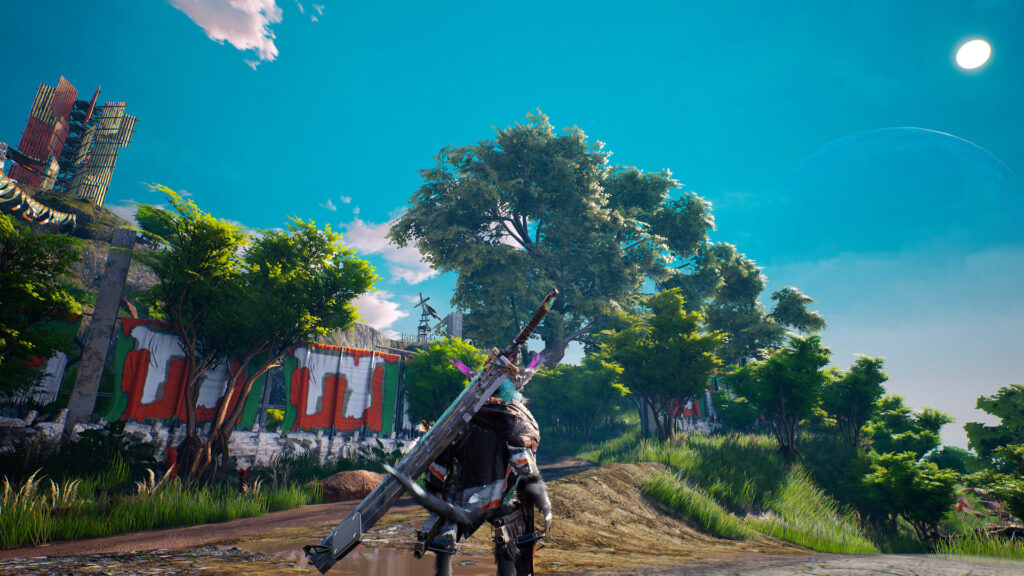
Biomutant is an ambitious open-ended sandbox adventure that has paid off for Experiment 101. Most expansive worlds in games tend to feel like wastelands of tedium, but this is unbelievably stuffed with substance and unique scenarios to experience.
Thanks to the game constantly throwing surprises and new ideas as the gameplay would begin to settle down into a formula, the experience gets shaken up. Most missions rarely have you doing the same thing, and it’s staggering by how creative the developers became while working in such a tired and played out genre.
Biomutant could have easily ended up like Cyberpunk 2077, but instead it delivers on its promises of being a truly epic action adventure game. It certainly isn’t perfect, but Biomutant is more than the sum of its parts, and that is saying something for such an enormous and packed game.
Biomutant was reviewed on Xbox Series S using a review code provided by THQ Nordic. You can find additional information about Niche Gamer’s review/ethics policy here.